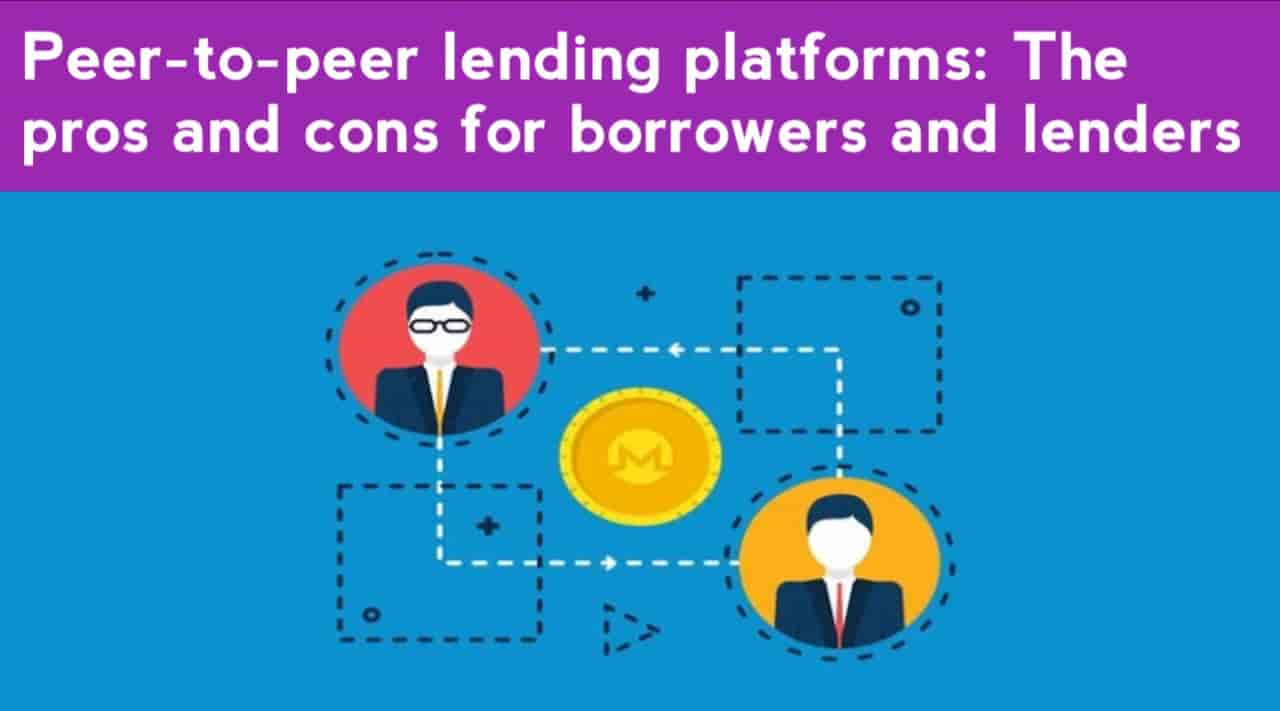Peer-to-peer lending: pros, cons, and best platforms
 Peer-to-Peer Lending: Pros, Cons, and Best Platforms
Peer-to-Peer Lending: Pros, Cons, and Best Platforms
Online lending platforms connecting borrowers directly with individual lenders, bypassing traditional financial intermediaries, constitute a significant development in the financial technology sector. This system allows individuals seeking loans to access capital from a diverse pool of lenders, often at potentially more favorable interest rates than traditional bank loans. Conversely, lenders can diversify their investments and achieve potentially higher returns than offered by conventional savings accounts.
This innovative approach has roots in the early days of the internet, gaining significant traction in recent years due to technological advancements and growing consumer demand for alternative financial solutions. Its rise reflects a broader trend towards disintermediation in financial services, empowering both borrowers and lenders through increased transparency and access. The subsequent sections will explore the advantages and disadvantages associated with this system, and subsequently examine some leading platforms facilitating this lending model.
The following analysis will cover the key benefits and drawbacks, provide guidance on selecting suitable platforms, and address frequently asked questions.
Pros of Online Lending Platforms
- Potentially Lower Interest Rates for Borrowers: Competition among lenders often leads to more competitive interest rates compared to traditional loans.
- Increased Access to Credit: Individuals with less-than-perfect credit scores or limited access to traditional banking services may find online lending platforms more accessible.
- Higher Potential Returns for Lenders: Lenders can achieve potentially higher returns than those offered by traditional savings accounts or other low-risk investments.
- Diversification of Investment Portfolio: Lenders can diversify their investments across multiple borrowers, mitigating risk.
- Transparency and Control: Platforms typically provide detailed information on borrower profiles and loan terms, giving lenders more control over their investments.
Cons of Online Lending Platforms
- Higher Risk for Lenders: Lending directly to individuals carries inherent credit risk; borrowers may default on their loans.
- Lack of Regulatory Oversight (in some jurisdictions): While regulation is growing, some platforms operate with less stringent oversight than traditional financial institutions.
- Potential for Fraud: As with any online platform, there is a risk of encountering fraudulent borrowers or investment schemes.
- Illiquidity: Retrieving invested funds quickly may be challenging, as loans typically have predetermined terms.
- Fees and Charges: Platforms often charge fees to both borrowers and lenders, impacting overall returns.
Choosing a Suitable Platform
Selecting a suitable platform requires careful consideration of several factors:
- Reputation and Track Record: Research the platform's history, reviews, and financial stability.
- Fees and Charges: Compare fees charged to borrowers and lenders.
- Loan Terms and Conditions: Review the terms carefully before investing or borrowing.
- Security Measures: Ensure the platform employs robust security measures to protect user data and funds.
- Customer Support: A responsive and helpful customer support team is crucial in addressing any issues.

FAQs about Online Lending Platforms
This section addresses frequently asked questions regarding online lending platforms to provide a clearer understanding of this financial mechanism.
Question 1: How safe is my money on these platforms?
Platform safety varies. Reputable platforms employ robust security measures, but inherent risks associated with any online financial transaction remain. Thorough research and due diligence are essential.
Question 2: What happens if a borrower defaults?
Default risk is inherent. Some platforms offer loss mitigation strategies like buyback guarantees or charge-off management, but losses are possible. Diversification helps mitigate this risk.
Question 3: What are the typical interest rates?
Interest rates vary based on borrower creditworthiness, loan amount, and platform. They can be higher or lower than traditional loans, depending on the risk assessment.
Question 4: How much can I lend or borrow?
Limits vary by platform. Lending limits often depend on the lender's investment capacity, while borrowing limits are determined by the borrower's creditworthiness and the platform's policies.
Question 5: How long does it take to get a loan or receive payments?
Loan processing times vary. Generally, online lending is faster than traditional loans but timelines depend on platform procedures and borrower verification.
Question 6: Are there any tax implications?
Tax implications vary by jurisdiction. Lenders should consult with a tax professional to understand the tax treatment of their investment returns, while borrowers should consider the tax deductibility of interest payments.
Understanding the tax implications is crucial for both lenders and borrowers.
Tips for Navigating Online Lending Platforms
These tips can improve the experience and minimize potential risks associated with online lending.
Tip 1: Diversify your investments. Don't put all your eggs in one basket. Spread your investments across multiple borrowers to minimize risk.
Tip 2: Thoroughly research platforms before investing. Look for established platforms with strong security measures and a positive track record.
Tip 3: Carefully review loan terms and conditions. Understand the interest rates, fees, and repayment schedules before committing.
Tip 4: Monitor your investments regularly. Keep track of your loans and borrowers to identify potential problems early.
Tip 5: Use reputable platforms only. Avoid platforms with questionable reputations or those lacking transparency.
Tip 6: Understand your risk tolerance. Online lending involves risk. Invest only the amount you can afford to lose.
Tip 7: Consider professional financial advice. Consulting a financial advisor can provide personalized guidance based on your financial circumstances and goals.
Conclusion on Online Lending Platforms
Online lending platforms present a transformative alternative to traditional lending models. They offer increased access to credit for borrowers and potentially higher returns for lenders. However, it is crucial to understand the inherent risks and exercise due diligence when selecting a platform and managing investments. Transparency, careful research, and a considered approach are key to leveraging the benefits while mitigating potential drawbacks.
The future of online lending likely includes increased regulatory oversight and further technological advancements, promising both enhanced security and greater efficiency. The ongoing evolution of this sector necessitates a continuous assessment of available platforms and a proactive approach to managing financial risk within this dynamic landscape.

Published on: 2025-05-10T21:23:45.000Z
